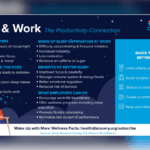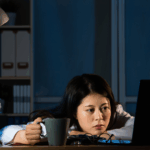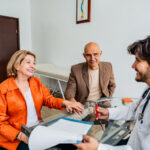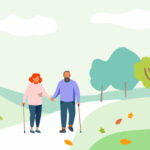If you snore at night, are sleepy during the day, or find yourself nodding off at stoplights while driving, it’s time to call the doctor. Your primary care doctor may recommend a sleep study to rule in or rule out sleep apnea.
Sleep Study Basics
A sleep study1 measures sleep quality and critical body functions while you’re in dreamland. It typically takes place in a clinical setting, such as a sleep center or a hospital room.
You arrive in the evening with your PJs. A technician hooks up your head and body to electrodes (they’re completely painless, but there is a sticky paste involved). The electrodes connect to leads that attach to equipment for monitoring heart, lung and brain activity and breathing. The electrodes also record eye, arm and leg movements, snoring, gasping and other respiration efforts, blood oxygen levels and more. Throughout the night, sleep study technicians will observe you by closed circuit camera or through a window. Yes, they can hear you, too. No, it’s not creepy once you get used to the idea.
During the sleep study, you read or watch TV until you fall asleep.
Generally, the technician will collect about seven hours of data, so you’ll be at the sleep lab overnight.
A home sleep test2, also known as an unattended sleep study, is sometimes used as an alternative to a study that takes place in a clinical setting. Most home sleep test devices are portable; you apply the sensors yourself according to directions and use the equipment for one to three nights. A board certified physician reviews the results. The test is cheaper than the copay for a lab-based sleep study.
Sleep Apnea Treatment
If a sleep study reveals obstructive sleep apnea, your doctor may direct you to an ear, nose and throat doctor to rule out nose or throat blockages. Or the doc may go ahead and prescribe a CPAP–a continuous positive airway pressure machine.
A CPAP is used every night during sleep. It pushes air into the airways to keep them open during sleep. The CPAP is set to a comfortable pressure and has a pump that controls airflow, a hose that transports the air from the machine to you, and a mask that goes over the mouth, nose, or sometimes both. You can order replacement hoses and masks online for the brand of the machine. Some machines have a chamber for tap water for extra humidity.
Sure, a CPAP takes a little getting used to. Older models were a bit Darth Vaderish with their woosh/woosh woosh/woosh sound pattern. But today’s models are small, quiet and easy to pack for travel.
Remember, people who don’t get treatment for sleep apnea face a higher risk of serious and sometimes fatal heart attacks, strokes, high blood pressure, and other health problems.
A CPAP can be life-changing. Imagine feeling awake and alert after only a few nights. Not nodding off at work or while driving a car are obvious benefits, too. So is saving your life.
1 Sleepdoctor.com, “What Happens During a Sleep Study?”
2 Sleepassociation.org, “Home Sleep Test and Sleep Apnea Sleep Study Testing”
More Resources:
Sleepfoundation.org, “How Does a Sleep Study Work?”
WebM.com, “How to Sleep Easier With Your CPAP Machine”
American Sleep Apnea Association, “CPAP Therapy”












